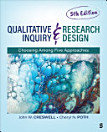Methodological review of economic impact assessment
Amazon Publishers, USA
Ebook
59
Pages
reportRatings and reviews aren’t verified Learn More
About this ebook
Evaluation or Assessment plays a crucial role in a policy or programme implementation process. A planned and organized approach to reviewing, analyzing and investigating both the validity and intended or unintended effects of a particular policy or program helps to understand the direction of the programme or policy to achieve the established objectives. Development programs and policies are typically designed to change outcomes such as raising incomes, improving learning, or reducing illness. Impact evaluations seek to answer such cause-and-effect questions precisely. Assessing the impact of a program on a set of outcomes is the equivalent of assessing the causal effect of the program on those outcomes. In this study report some of the important methodologies was discussed in detail.Regression Discontinuity Design (RDD) is not a method in itself but a design. The application of RDD requires presence of a forcing variable on which treatment allocation is made. In this premise, RDD provides a quasi-experimental set up around the cut-off, such that observations near to cut-off on either sides are similar except for the treatment and thus enabling researcher to measure impact with least bias. Graphical representation, an integral component of RDD, is often intuitive and expressive. But, the applicability of the design may be limited by the fact that in most of welfare programs and schemes, use of rating variables for selection of beneficiaries are rare. Differnce-in-Differnce (DiD): It may be difficult to include unobserved differences in characteristics in the analysis. But Difference-in-Difference method helps to resolve this problem to the extent that many characteristics of units or individuals can reasonably be assumed to be constant over time. By using this method we also cancel out the effect of all the characteristics that are unique to that individual and that do not change over time.Economic Surplus (ES) Model: Among the multiple measure, Economic surplus model is popularly used to estimate returns to research investment in Agriculture. Because, this model requires little data and it also easy to use by the person who had a basic knowledge about economics. It also provides useful and effective outputs in showing the benefits generated by agricultural research. The study has demonstrated that the economic surplus method captures the impact of Bhoochetana programme activities in a holistic manner and assesses the distributional effects of producers and consumers and therefore it would be a fairly good methodology to assess the impact of the programme.
Rate this ebook
Tell us what you think.
Reading information
Smartphones and tablets
Install the Google Play Books app for Android and iPad/iPhone. It syncs automatically with your account and allows you to read online or offline wherever you are.
Laptops and computers
You can listen to audiobooks purchased on Google Play using your computer's web browser.
eReaders and other devices
To read on e-ink devices like Kobo eReaders, you'll need to download a file and transfer it to your device. Follow the detailed Help Center instructions to transfer the files to supported eReaders.






